The leaves are beginning to turn red, the start of the spectacular splash of colour that awaits fall visitors to canoe-crazy Algonquin Provincial Park. We choose the classic, popular Big Trout Loop, a 73-km circuit of sixteen lakes (each with at least one pair of resident loons), marshy waters, narrow creeks, and slow-moving rivers. We give ourselves ten days (this route is usually paddled in four or five days). Still, our physical strength and Doug’s engineering skills are tested by foreign gear and fourteen portages, the longest portage being 2.3 kilometres.
Full outfitting
Julie has our gear laid out neatly on a table when we arrive on the morning of September 18. Because of luggage restrictions on preceding trips, we bring only a few essentials of our own: our GravityWorks water filter, two Helinox chairs, and Doug’s camping pillow.
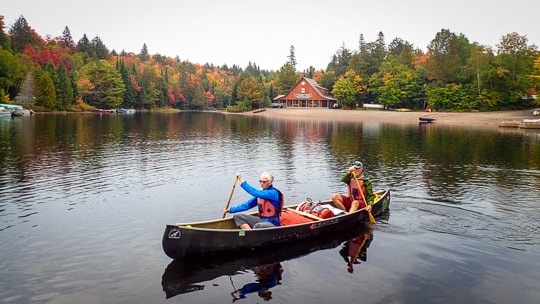
Everything else – canoe, camping equipment, ten days worth of food – comes from the Complete Outfitting Package offered by the Portage Store.
Although the gear is not our own, it looks, well, complete. The menu is nutritionally balanced, and the food plentiful. Julie says they have done more than two hundred Complete Outfitting Packages this summer, but at ten days, ours is the longest trip she has arranged.
In a drizzle, we load our 33-pound ProLight Carbon Canoe and paddle Canoe Lake, where artist Tom Thomson lived one hundred years ago. On a rocky point, a short trail leads to a cairn placed as a memorial to Thomson, who drowned in this lake under mysterious circumstances in 1917, at the age of 39.
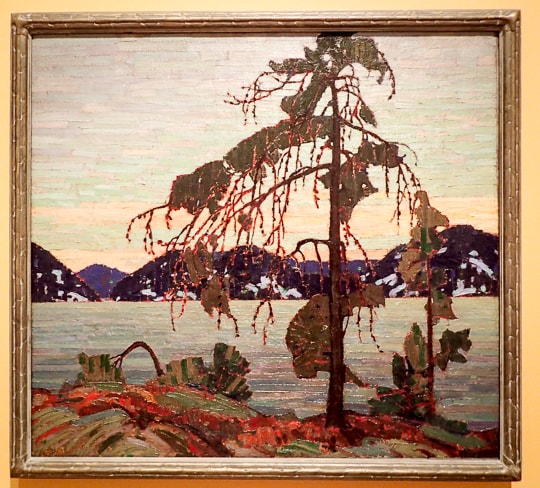
Algonquin gets a lot of visitors. Even in September, one of the quieter months, traffic jams can occur at portages on the popular routes. At our access point and the first portage, we see lots of boats: large groups of outdoor education students, novice paddlers banging paddles against the sides of their canoes, and old hands to whom Algonquin tripping is a near-religious experience.
Night one we camp on Tom Thomson Lake, sharing our site with an extremely bold chipmunk. It rains hard all night, but the rented tent doesn’t leak, and we won’t need our rain gear again for the duration of the trip.
A little help from young friends
With help from two 10th grade girls, their leader, and two 10th grade boys, our portage from Tom Thomson to Ink Lake takes only four hours. These young people kindly carry our canoe, Duluth pack, and food barrel for about 700 metres, one-third of this 2.3-kilometre portage, saving us at least an hour of work. “You two are an inspiration,” say the young people, when they hear about our adventures past and planned. “Likewise,” says we. As teenagers, we did not have the skills or motivation to tackle a canoe trip or the empathy to help two old people carry their gear.
Ink Creek, a brown-stained waterway, is lined with lovely lilies. After checking out a few campsites, we settle on a chipmunk-free island in McIntosh Lake and collapse into bed at 7 p.m.
24 hours of sausage products
By day three a heat wave is developing, so we need to eat the remaining perishable food asap. Breakfast sausages for breakfast, hot dogs for lunch, dinner sausages for dinner, and it’s done. It’s a rest day, so we have time to explore our enormous campsite, photograph mushrooms, and watch loons.
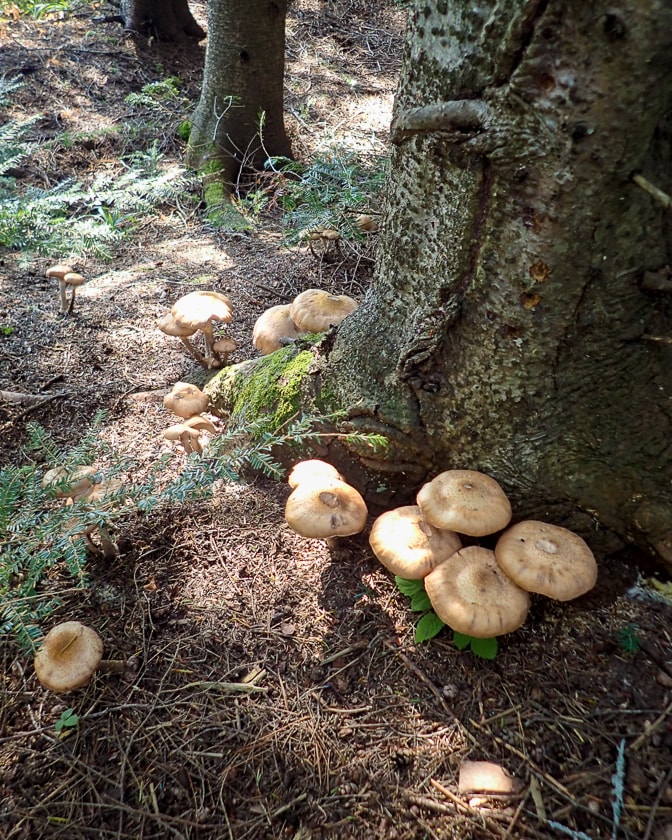

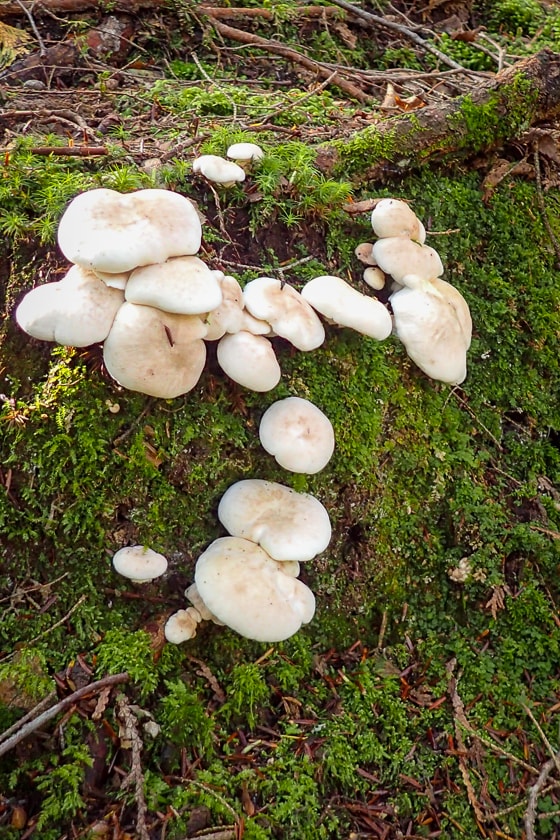
Marsh bog
Bog plants decorated with spider webs, spunky frogs on the trail, and a family of loons are sighted as we navigate McIntosh Marsh, Grassy Bay, and into White Trout Lake, where we find a lovely island campsite. Islands have squirrels, but fewer chipmunks; perhaps chipmunks can’t swim?
Repairing with rocks
One tent pole is broken, and one of the air mattresses has a leak. We notice these problems on night one, but by mid-trip the tent pole is completely shot, and the air mattress is useless. No repair kits – just a small roll of plastic tape – but Doug is up to this real-world engineering challenge! Using a rock, he breaks the pole and shortens it. The tent has a lop-sided look, but it gets us through. He finds the mattress leak; the tape is not a proper patch, but the mattress now holds air for an hour or two. Doug’s next challenge: refining his food-hanging skills.
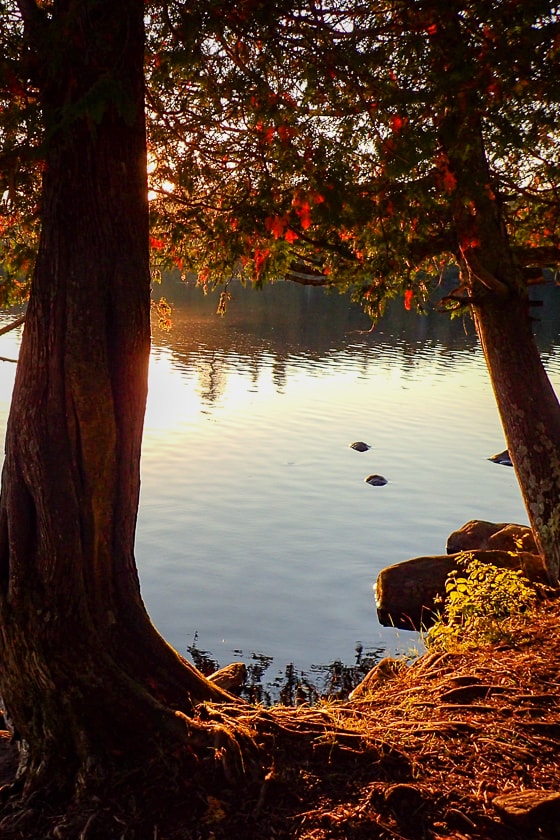
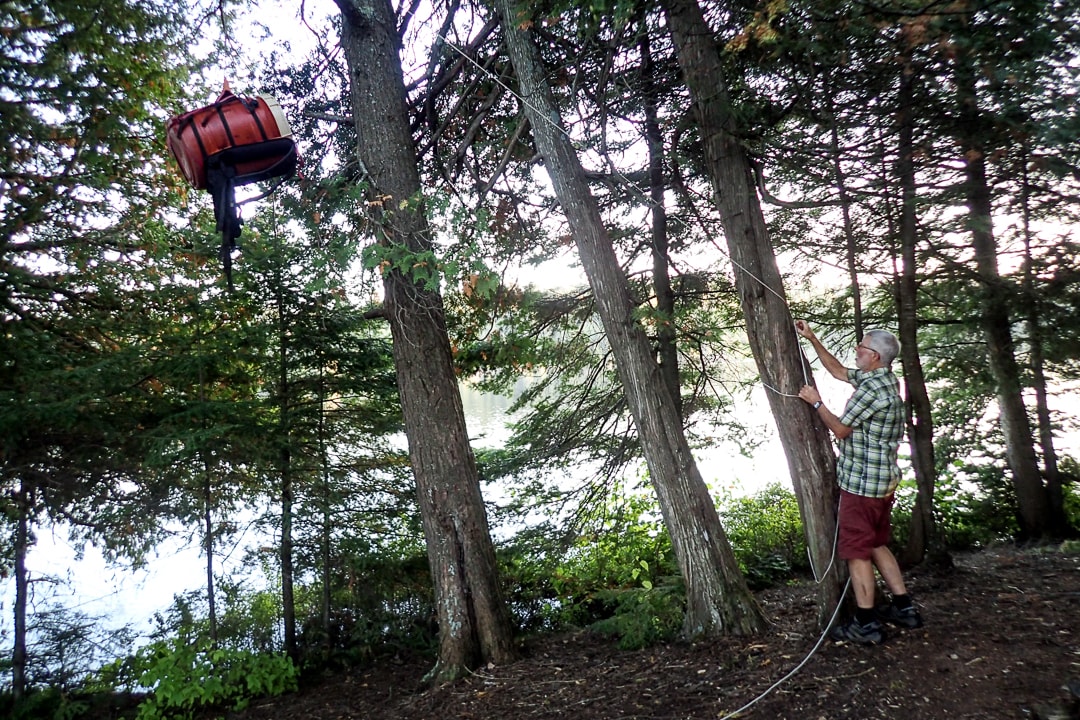
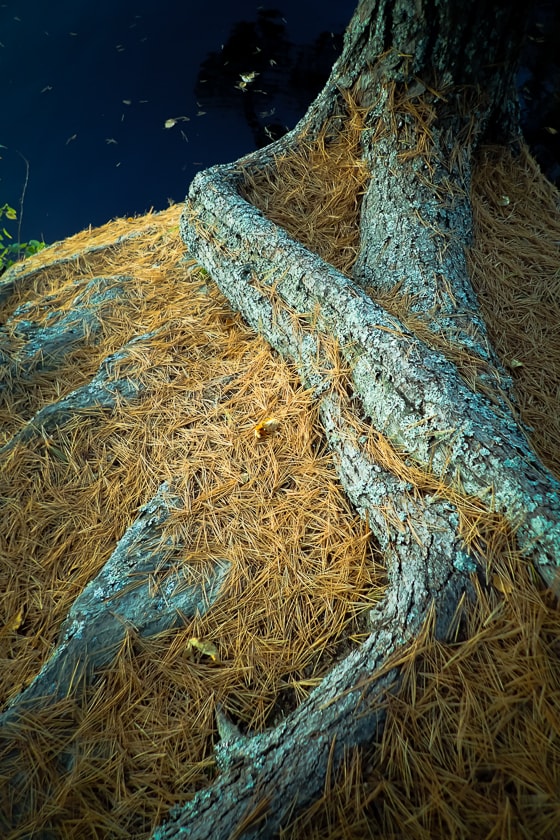
Bird watching
A blurred streak and a loud whoosh catch our attention. We turn to look; could it be a peregrine falcon strike? It’s possible, as these silent, speedy birds are making a comeback after near-extinction in the 1950s and 60s. Algonquin Park has 272 recorded bird species, but our favourite will always be the Common Loon, the true symbol of wild places.
A lot of lifting
Which is harder: one portage of 2.3 km (day two) or five portages totalling 1.7 km (day seven, from Big Trout to Otterslide Lake)? We have plenty of time to contemplate this interesting question, as each portage requires two passes. We are getting stronger, but not strong enough for the ideal single-pass method (maybe if we hadn’t brought the lawn chairs?). Time-wise, the two are about equal, but day seven involves even more lifting – over at least six beaver dams (we lost count).
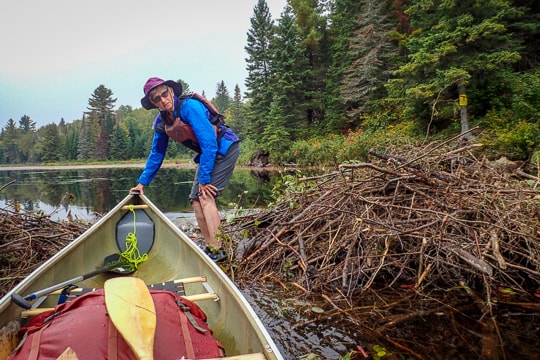
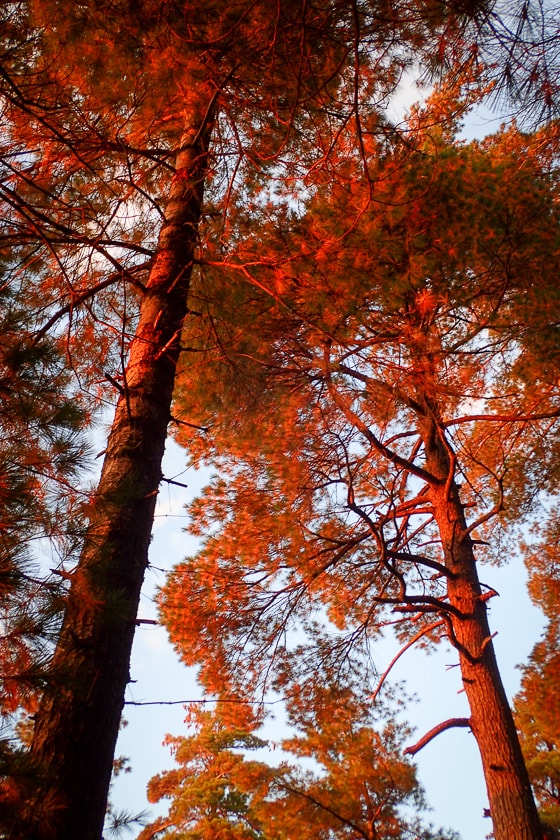
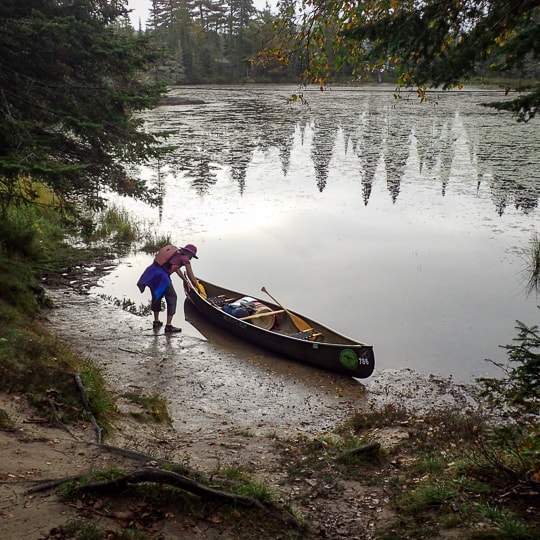
Kids, what is an otter slide? River otters often move by sliding. Playful and social animals, otters love to slide on ice, snow, mud, and even on fallen leaves. They can even slide up hill! Otterslide Lake is named for a five-foot slide.
The home stretch
Portage trails are manicured. Put-ins and take-outs are beaches rather than gooey mud and sharp rocks. Day-trippers from a fancy lodge. A barking dog. A picnic table in the campsite. Our cell phone has (weak) reception. Signs that we are on the home stretch. It is a sad feeling, actually, because into our second week we find a comfortable rhythm and feel no need to leave.
A beaver cheers us on our last night. He (or she) glides by, swimming with great purpose towards a clump of sticks. Beavers have a lot to do in autumn, in preparation for the coming winter. Doug feels a special attachment to beavers. In elementary school, he wrote a paper titled Our Friend, Castor Canadensis Michiganensis. We still have the paper, and yes, he got an A+ grade.
Good timing! On day ten the weather is changing. The heat wave ends, and raindrops fall just as we pull into the Portage Store dock to end our trip.
Algonquin ethos
“I could tell,” says the boat-rental guy, when we mention that we live on the west coast. It seems our clothes gave us away. Our west coast style is quite different from the Algonquin way. Paddlers, if you are interested in our cross-cultural observations, click here.
Exactly fifteen years ago, newly retired, we spent ten days in Algonquin Park. How does Algonquin seem today, fifteen years later? Some of the campsites are showing signs of wear and tear, but, then, so are we! What remains the same: Algonquin provides the classic Canadian canoeing adventure, to be enjoyed by young and old alike.

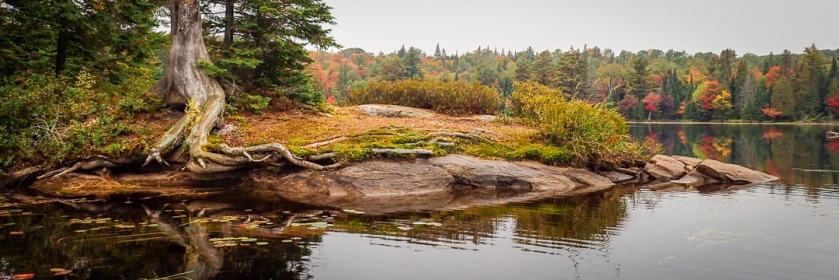
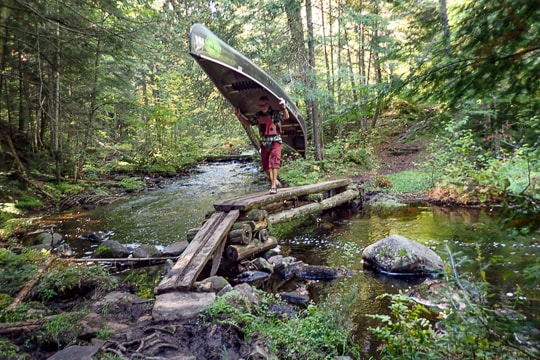
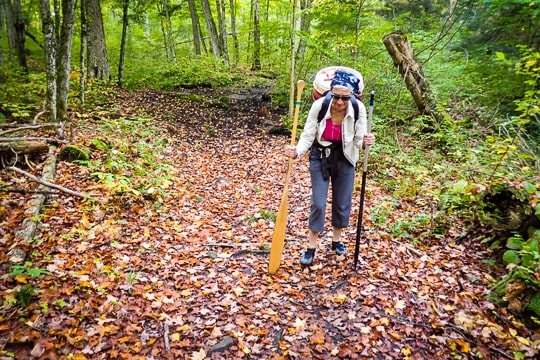

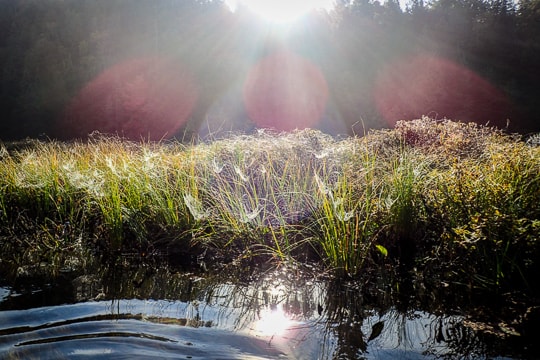



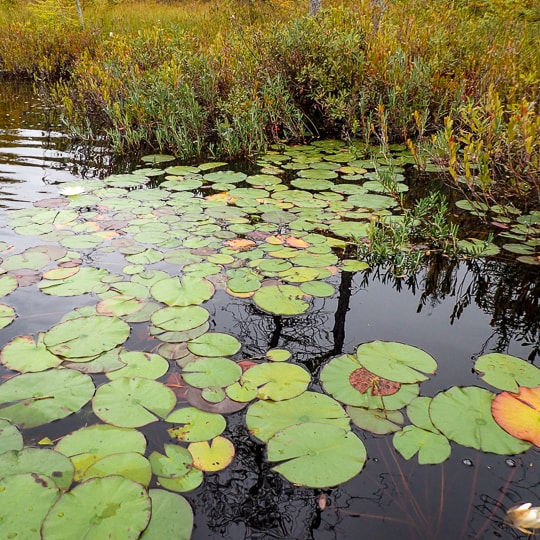
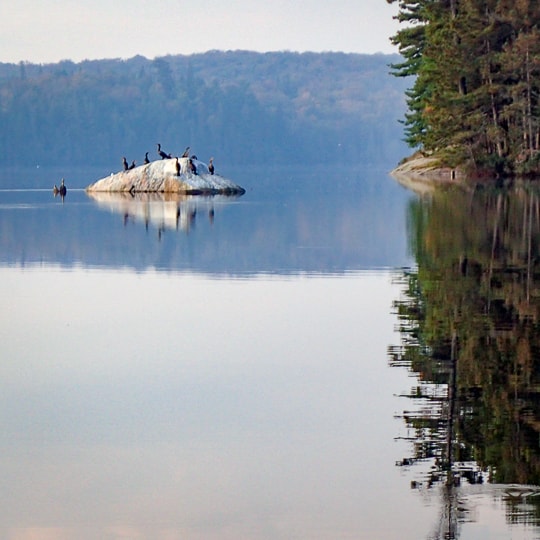
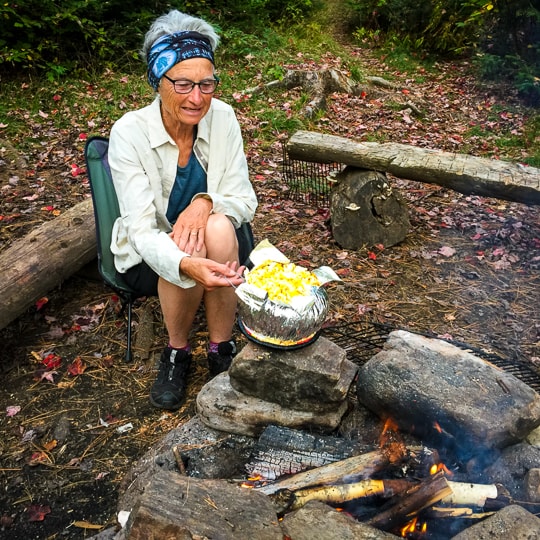
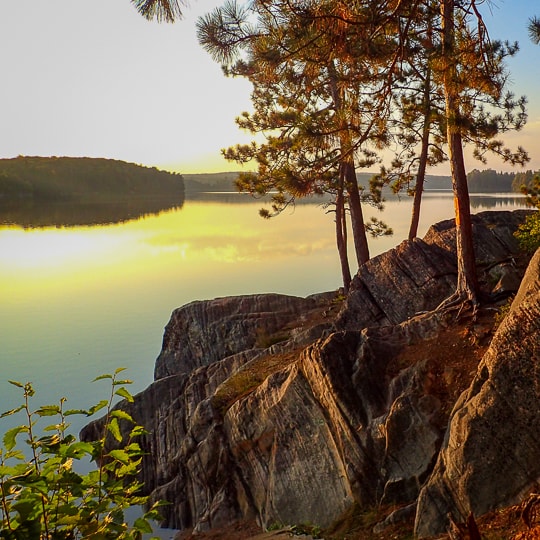

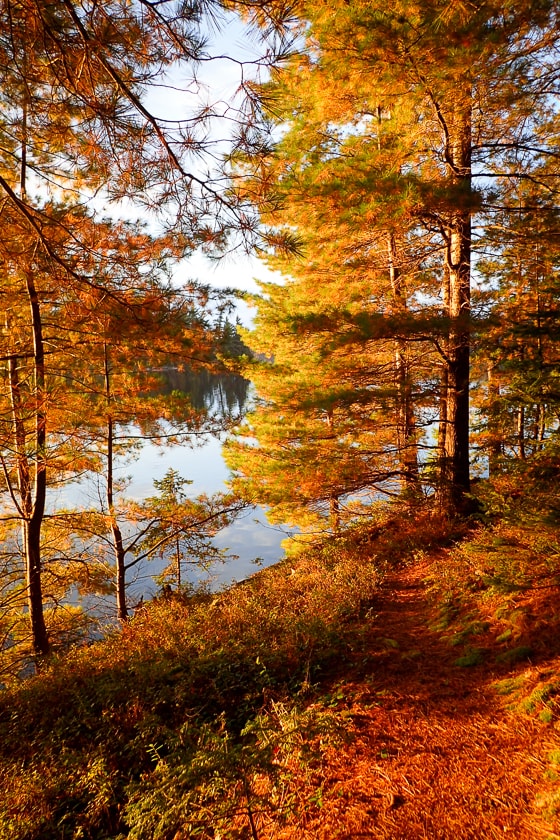
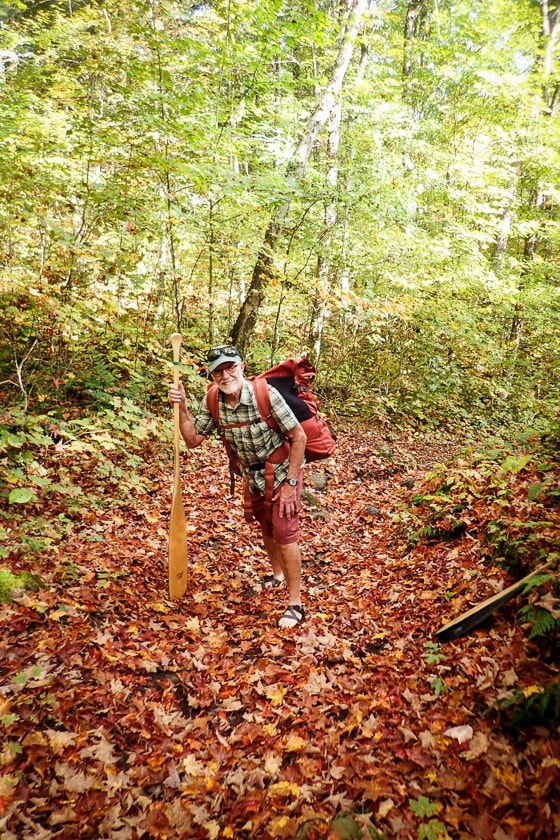


What a fantastic trip! Congratulations Doug and Cathy. You are an inspiration. This has to be the classic Canadian adventure. We drove through Algonquin Park on our way to Ottawa a couple of years ago. We unfortunately did not make time to canoe. It is on my bucket list to do in the future. Shaun
LikeLiked by 1 person
Thanks for your comments, Shaun. Fall is a great time for an Algonquin paddle, not only for the colours, but also because there are fewer bugs. Our rented carbon fibre canoe was a joy at only 35 pounds.
LikeLike
Hi Doug & Cathy Thanks for the great photos and story. I could not do your trips even when i was young!!(like a couple of years ago) Ho HO And HAPPY THANKSGIVING It will be so good to have you back and to visit. Paul& Dorothy
LikeLike
Hi there you two. There were moments on our portaging that we thought we couldn’t make it. Luckily, some kids came along and helped out. Those Duluth Packs are a pain in the you-know-what. Hope to see you real soon at McD’s. Senior coffee, yeah! ❣️
LikeLike
It looked like a wonderful trip. Beautiful photos and great story writing. I love to follow your blog and see all your amazing adventures.
LikeLike
Thanks Sam. We’ve been enjoying your iPhone tips on FB (Cruising with Sam @cruisingwithsam). I’ve started doing some “Sam inspired” Instagram stuff. Keep it up. Doug
LikeLike
You two are awesome. Glad you are having a safe adventure.
LikeLike
Doug and Cathy, I so enjoy your varied trips and excellent photos and journal entries. A wonderful record of an interesting life. You are making the most of it!
LikeLike
Thanks Gillian. I think we had almost as many adventures this year as you guys did. Gotta keep on the go, right?
LikeLike